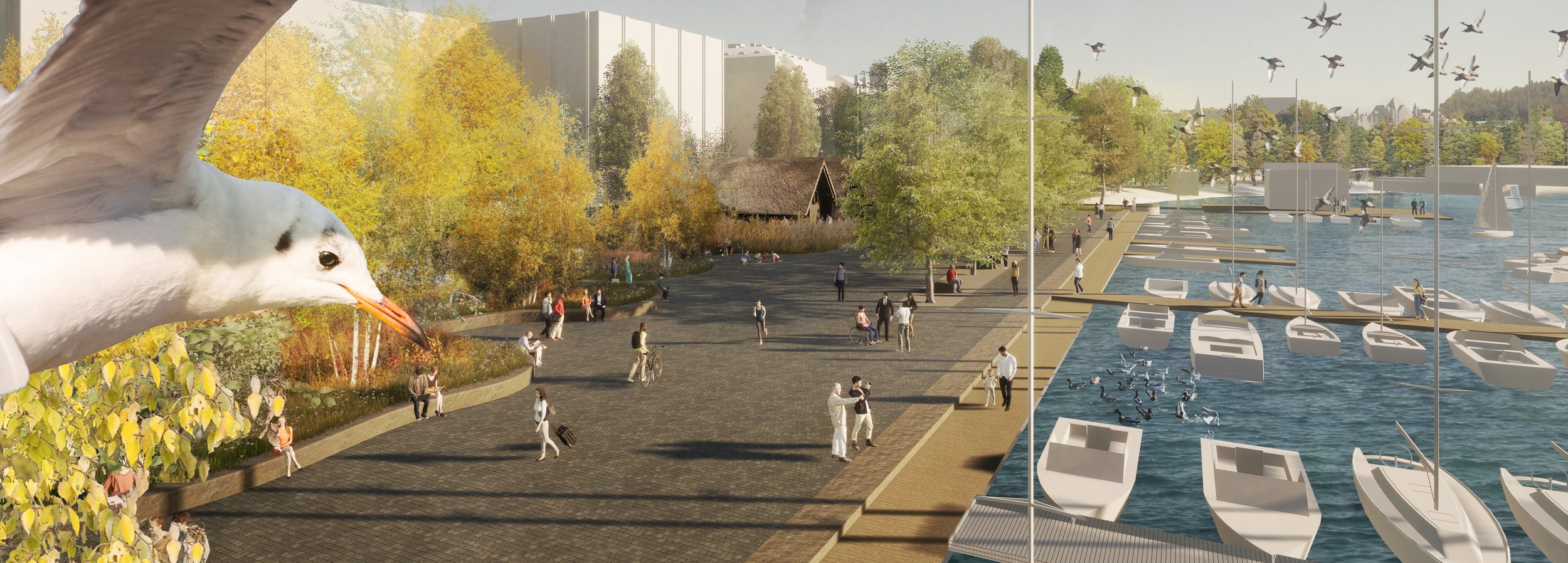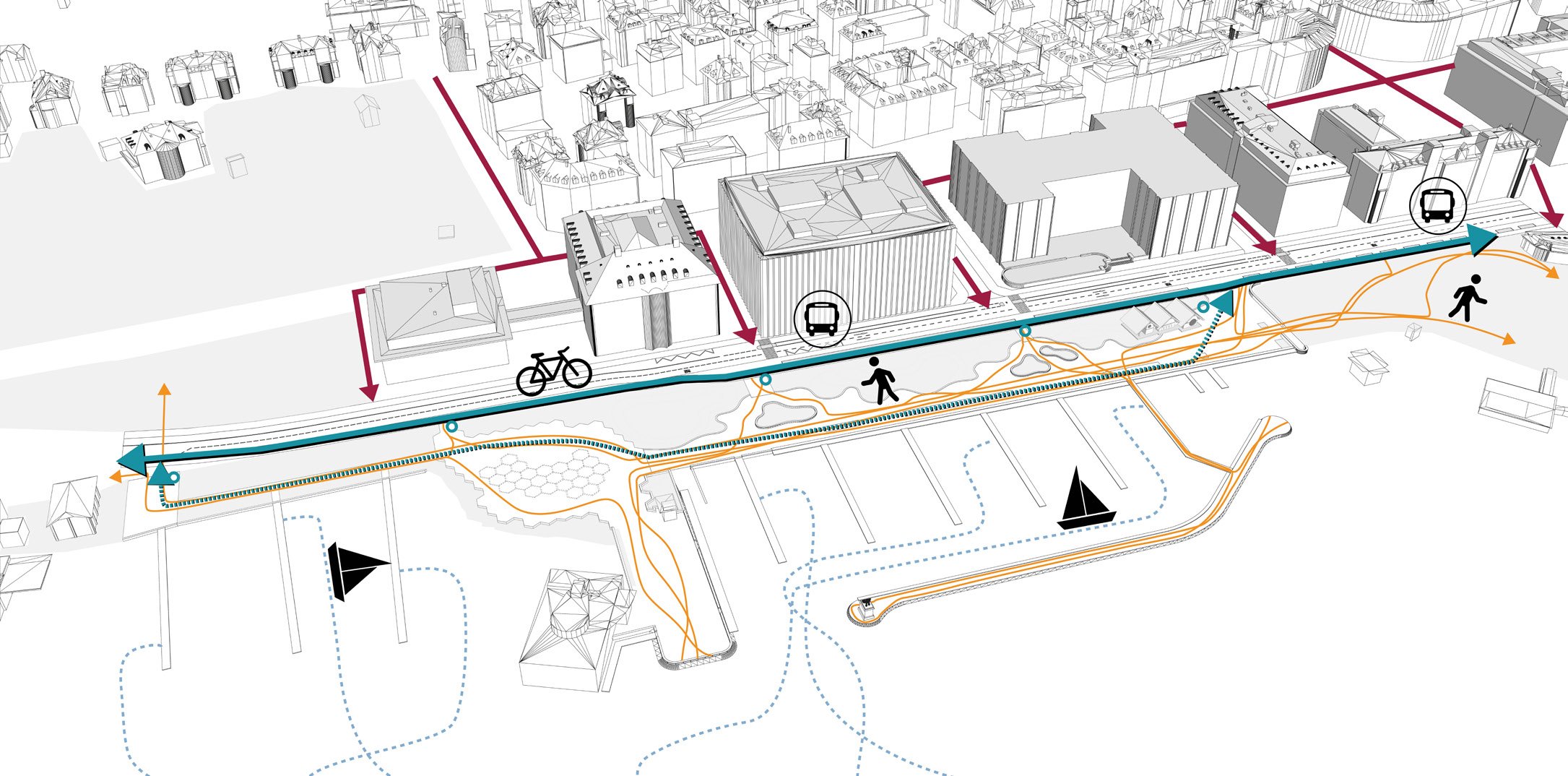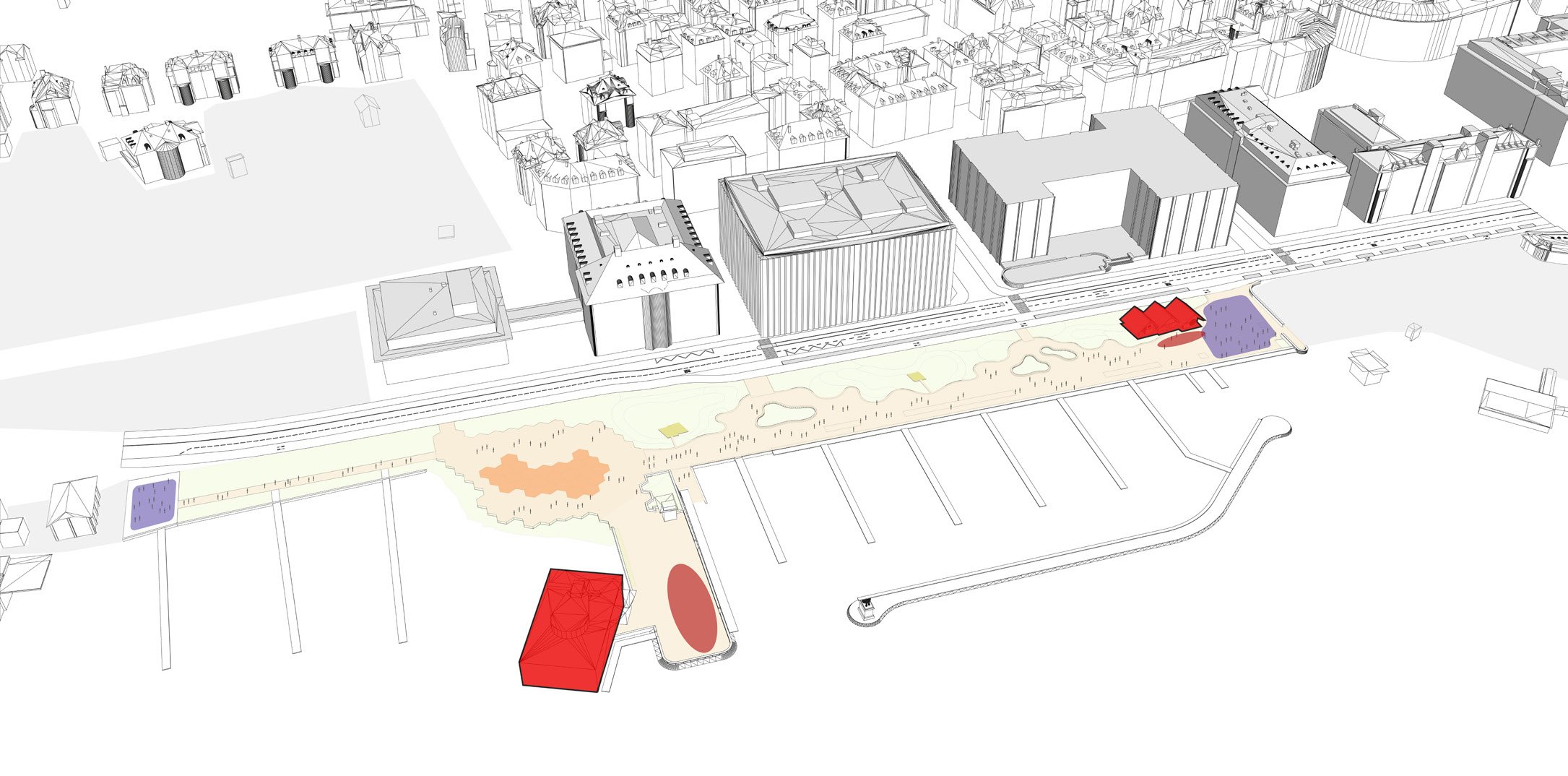We owe Lake Zurich to the last ice age; the Linth glacier gouged out the depression, leaving behind the terminal moraines on which the city of Zurich was later built. Only the retreat of the ice gradually made possible the settlement of the lakeshore by plants, animals and later humans. The lakeshore in the Enge was settled by Neolithic pile-dwellers of the Corded Ware Culture. Where people settled, wooden remains of their huts were left behind. Human waste led to over-fertilization of the water, causing reed beds to spread around settlements. These still provide attractive habitats for flora and fauna today. Many of these biotopes have disappeared today.
Hafenenge Zürich
Competition
Team:
Landscape Architecture - Peter Rier, Jonas Frei
Urban Planning - Philipp Rier, Ladina Projer
Architecture - Fangan Architekten

Evolution of Hafenenge
Large parts of the old town of Zurich were built of sandstone, which came from the shores of the Obersee. The sandstone was brought to Zurich via the old harbors, including the Enge. In the 19th century, the present harbor complex was built and large parts of the lake basin were filled in for parks and promenades. Bathing facilities were also built to combat epidemics such as cholera and typhus.
Besides the current recreational use of the harbor and promenade, today the harbor area is used as a parking lot. The well-preserved pavement cobblestones provide the raw material for new ideas as a reminder of earlier designs. The site-appropriate existing trees and shrubs also provide an attractive setting for future design.

Site Plan Hafenenge
The project design reflects the intention to give this historic site a forward-looking and exemplary form, as an urban-natural space. By reviving historical elements, which in their entirety create a resilient, versatile and above all sustainable space. High-quality urban qualities in the form of a promenade and a dynamically usable square, as well as ecological qualities in the form of a diverse terrestrial riparian vegetation, are combined on the small area. Urban and ecological functions must be possible even on very small areas for a resilient city of the future. As Gottfried Keller already wrote in the book Die Leute von Seldwyla: "It is the small things that make the world bigger".








